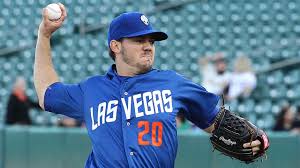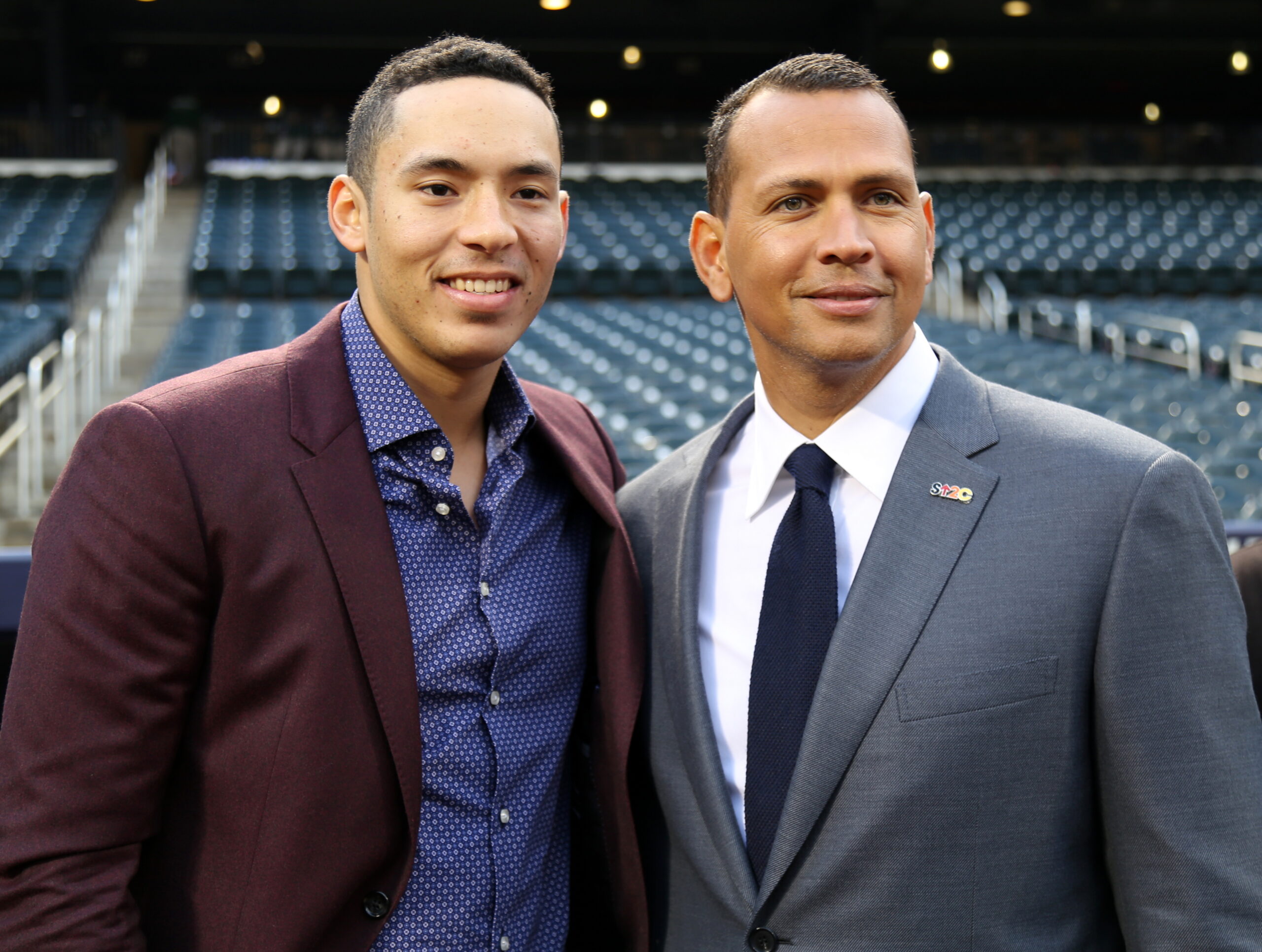A New Kind of Two-Way Player

One of the best hitters in the minor leagues is a free agent. This player blasted the triple-A Pacific Coast League with a 180 wRC+ in 2018. He’s a career .369/.396/.495 hitter in double-A and triple-A combined. He even plays an up-the-middle position (sort of).
Why isn’t this outstanding hitter more sought-after? He’s not really a hitter at all.
Tyler Pill
28-year-old Tyler Pill is a right-handed pitcher who spent 2018 in the Dodgers and Diamondbacks organizations. Prior to that, he played seven years for various Mets affiliates after they drafted in the fourth round of the 2011 draft. He cracked the majors in 2017, appearing in seven games and even starting three of them.
In his brief major league career, he gave up 16 runs in 22 innings with 10 walks and 16 strikeouts. The Mets let him walk away as a minor league free agent after the season. Pitching mostly in triple-A in 2018, his results weren’t much better, with 54 runs allowed and 57 strikeouts in 82 1/3 innings.
Pill has mostly been a successful minor league pitcher. To reach the major leagues at all is an unbelievable accomplishment, and requires mastery of each level of the minors. All the while, he’s blasted some of the best pitchers on the planet in double-A and triple-A. When NL affiliates play against each other at the two highest levels of the minors, there is usually no DH. This allows Pill to truly show his brilliance.
Pill At Bat
Tyler Pill has history as a two-way player, albeit not that recently. He followed his older brother Brett, who played first base and outfield for the San Francisco Giants from 2011-13, to Cal State-Fullerton. Prior to 2011, he was named one of the top 100 college players by College Baseball Daily. As an outfielder that year, he slashed .323/.435/.439. He also amassed a 2.28 ERA, leading his team in innings pitched (98 2/3) and strikeouts (110).
Despite his proficiency on the mound and in the batter’s box, the Mets drafted him strictly as a pitcher. This was probably the correct decision. He did reach the major leagues, after all. Only 9 of the 30 players drafted in the fourth round in 2011 reached baseball’s biggest stage.
It would be several years before baseball’s newfound infatuation with two-way players. Shohei Ohtani was a 16-year-old high schooler in 2011, largely unknown outside of Japan. Now that the game has changed, could there be an opportunity for Pill?
Two-Ways
Ohtani took America by storm in 2018, winning the AL Rookie of the Year as a standout pitcher and DH for the Angels. Even if he never plays again (perish the thought), he’s the gold standard for two-way players. However, he might be setting a trend as well.
The Rays drafted Brendan McKay with the fourth overall pick in the 2017 draft with the intention of developing him as a two-way player. MLB Pipeline currently lists him as the #24 prospect in baseball and #2 overall in the Rays system as a first baseman and left-hander. His bat has lagged behind his arm, but he’ll probably play in double-A next year.
Encouraged by McKay, the Rays selected Tanner Dodson in the second round of the 2018 draft. He played center field and pitched in relief for Hudson Valley, their short-season New York-Penn League affiliate.
Recently, the Reds made some intriguing news. Reliever/swingman Michael Lorenzen has been a fixture of their pitching staff since his debut in 2015. This winter, he’s working out as an outfielder as well. He batted .290/.333/.710 in 34 plate appearances last year, swatting four home runs (and getting snubbed for the pitcher’s Silver Slugger).
A New Path for Pill?
Lorenzen and Pill were teammates at Cal State-Fullerton. In Pill’s draft year of 2011, freshman Lorenzen was strictly an outfielder and didn’t pitch at all! Now he’s in the majors as a pitcher/pinch hitter who could help write the blueprint for Pill to succeed in a unique role.
As a pitcher, Pill has already been more successful than most. He reached the mountain top and can forever call himself a major leaguer. However, the odds are long that he’ll establish himself as a sustained big league player, especially coming off a down year in the minors at a relatively advanced age.
He does have an arrow in his quiver that few other players possess. His undeniable dominance as a batter in the highest level of the minors should give prospective teams something to consider. With limited roster space, a two-way specialist is like having an extra player that the opponent does not.
Changing Tack
Branch Rickey was the greatest, most innovative general manger of all time. He signed Jackie Robinson out of the Negro Leagues in 1945. Some years earlier, he built the first farm system. In between, he made several run-of-the-mill roster decisions, just like any other GM. Lots of them worked out, and some of them didn’t.
At the helm of the Cardinals in the spring of 1940, he met with his top advisers for the annual discussion of which minor leaguers to keep and which to let go. Deep into the meeting, they reached the name of a teenage pitcher who had struggled in the low minors. His advisers suggested they release the pitcher, having not seen enough potential. Rickey saw that the kid was a decent hitter and decided to give him one last shot, but as an outfielder.
That was Stan Musial.
Baseball players, like all humans, grow and change constantly. Development is nonlinear; it meanders back and forth, sometimes in unexpected directions. Tyler Pill is not Stan Musial; no one is. But who’s to say he’s not Rick Ankiel or David Peralta?
Maybe Pill isn’t quite good enough to get back to the bigs as either a pitcher or a hitter (or maybe he is!). But if he can do both with some level of competence, that could be worth a roster spot. At the very least, someone ought to invite him to Spring Training to find out.















